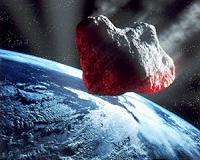 |
Orlando FL (SPX) Dec 14, 2010 A peculiar gas-giant planet orbiting a sun-like star 1200 light-years away is the first carbon-rich world ever observed. The implications are big for planetary chemistry, because without much oxygen, common rocks throughout the planet would be made of pure carbon, in forms such as diamonds or graphite. "On most planets, oxygen is abundant. It makes rocks such as quartz and gases such as carbon dioxide," said University of Central Florida professor Joseph Harrington, one of the study's lead researchers. "With more carbon than oxygen, you would get rocks of pure carbon, such as diamond or graphite, and lots of methane gas." "This planet tells us that there are many other strange worlds out there, beyond even the imaginations of the people doing the science," added Nikku Madhusudhan of the Massachusetts Institute of Technology. He is the lead author of the study, which appears in the Dec. 9 issue of the journal Nature. Harrington and his team at UCF led the Spitzer observations and data analysis. The UCF team used NASA's Spitzer Space Telescope to measure the light of the planet, WASP-12b, as it passed behind its star, a so-called secondary eclipse. Madhusudhan performed the chemical analysis of data from NASA's Spitzer Space Telescope. By using UCF's data and other published results at different infrared wavelengths, he compared the infrared behavior of common gases to determine the composition of the planet's atmosphere. Researchers were surprised to find methane, a trace gas on Earth, because it typically does not exist in the searing-hot temperatures found on this planet. Carbon is a key building block of life, but could life exist if there is too much carbon? NASA's recent announcement of a bacterium that thrives in a poisonous arsenic environment is yet another example of life's incredible adaptability. "I wouldn't discount any cool planet as a possible haven for life, no matter what its chemistry," Harrington said. WASP-12b isn't cool enough for life. It is so close to its star that its "year" is just 26 hours, and its daytime temperatures of about 4700 degrees Fahrenheit make it the second-hottest planet ever measured. It is also the second-largest known planet, as it is more than 80 percent wider than Jupiter. The planet was discovered last year by a UK consortium, the Wide Angle Search for Planets. Some of the Spitzer data used by the UCF team were contributed by WASP team member Peter Wheatley of the University of Warwick. Other authors of the paper are Kevin Stevenson, Sarah Nymeyer, Christopher Campo, Jasmina Blecic, Ryan Hardy, Nate Lust, Christopher Britt and William Bowman of the University of Central Florida; Drake Deming of NASA Goddard Space Flight Center, Greenbelt, Md.; David Anderson, Coel Hellier and Pierre Maxted of Keele University, United Kingdom; Andrew Collier-Cameron of the University of St. Andrews, United Kingdom; Leslie Hebb of Vanderbilt University, Nashville, Tenn.; Don Pollacco of Queen's University, United Kingdom; and Richard West of the University of Leicester, United Kingdom.
Share This Article With Planet Earth
Related Links Spitzer at NASA Exoplanets at NASA University of Central Florida Lands Beyond Beyond - extra solar planets - news and science Life Beyond Earth
 NASA Scientists Theorize Final Growth Spurt For Planets
NASA Scientists Theorize Final Growth Spurt For PlanetsWashington DC (SPX) Dec 13, 2010 A team of NASA-funded researchers has unveiled a new theory that contends planets gained the final portions of their mass from a limited number of large comet or asteroid impacts more than 4.5 billion years ago. These impacts added less than one percent of the planets' mass. Scientists hope the research not only will provide a better historical picture of the birth and evolution of Earth, ... read more |
|
| The content herein, unless otherwise known to be public domain, are Copyright 1995-2010 - SpaceDaily. AFP and UPI Wire Stories are copyright Agence France-Presse and United Press International. ESA Portal Reports are copyright European Space Agency. All NASA sourced material is public domain. Additional copyrights may apply in whole or part to other bona fide parties. Advertising does not imply endorsement,agreement or approval of any opinions, statements or information provided by SpaceDaily on any Web page published or hosted by SpaceDaily. Privacy Statement |